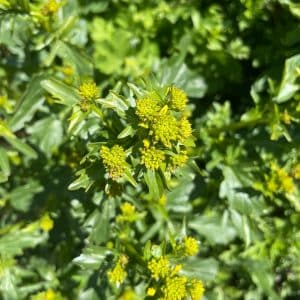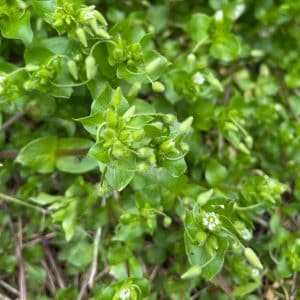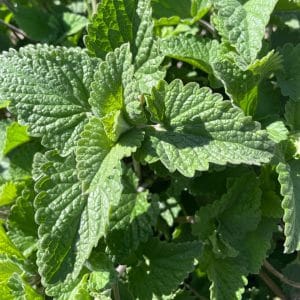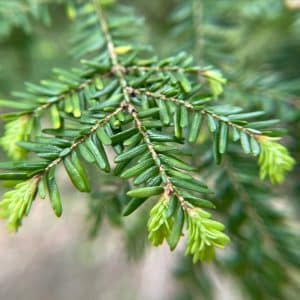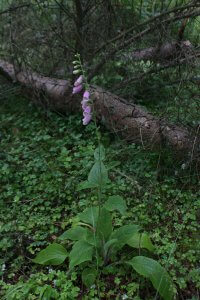
The information in this article is vitally important for anyone who is interested in foraging, mushroom hunting or wild crafting. If you can share this information and help save 1 person it is worth it. It’s cold and snowy here in New England right now and far from prime foraging season but I thought this might be a good time to reflect on this information as we prepare for spring or venture out for winter foraging. It is now early 2018 but the most recent complete information I could obtain was from 2016 and that Is what will be included in this article. The benefits of foraging are abundant and well known. Not only can we increase nutrient diversity by foraging but many would say that the more important benefit is connecting with nature. Often people who have been out in the field foraging describe it as literally a spiritual experience for them. I agree with that sentiment and I strongly support promoting the knowledge and mental health benefits of foraging. Although the vast majority of foragers never experience any negative side effects I sometimes see a dangerous attitude of not respecting the risks associated with foraging creep into the community from time to time. This information can be emotionally strenuous to consider but we must all take some time to make sure that our actions will not lead to anything like the negative impacts that some people experience. We sometimes chock it up to something that happens to other people, but obviously that delusion comes crashing down for a few people each year.
Plant and Mushroom Poisoning Statistics 2010-2016
The majority of the data in this article is from the AAPCC(American Association of Poison Control Centers) and I will be referring to them as AAPCC. The data from AAPCC includes the number of cases filed with the AAPCC and whether their outcomes are minor , moderate, major or resulted in death. These cases are from the US only. Although the question “how many people in the US die from foraging each year?” is important, It is also pertinent to review the number of whats refered to in the data as major outcomes. These are cases where the people have not died but have had very bad outcomes including but not limited to hospitalization, organ transplants, and permanent neurological damage. Included in this article I have reviewed statistics from 2010-2016. It is worth noting that these numbers are the minimum number of actual cases each year. It is completely conceivable that some cases of major outcomes and fatal poisoning are unreported to the AAPCC for one reason or another. It’s impossible to know the actual numbers but this information will give us the statistics and some details on all the cases that have been looked into and confirmed to be plant or mushroom poisoning with somewhat high certainty. The AAPCC has categorized the reason for poisoning into a few different categories and sub categories. For example they have categories such as intentional-abuse, intentional- suspected suicide, intentional-misuse, unintentional-misuse as well as a number of other categories and sub categories. The “unintentional” category generally seems to relate closest to foraging incidents.They also have a rating system for fatalities that indicates to what extent the exposure likely caused the final outcome, this will not be included in my summary of the data. All this additional data can be found on the original reports which you can access by going to the AAPCC Reports Page. For the purposes of my summarization of the data I have separated the cases that lead to fatalities into 4 categories: intentional, unintentional, unknown, and a catch all category for cases who’s reasons were unavailable or in an uncommon category.
Suicides
Sadly while going through this information it made me acutely aware of the suicide epidemic that our country suffers from. A significant percentage of reported fatal plant and mushroom poisonings are suspected to be intentional suicides. As mentioned above I will separate out these numbers to distinguish between intentional and unintentional poisonings. Not all intentional poisonings are considered suicides but many are. These devastating suicide deaths can teach the foraging community at least one important piece of information about plant toxicity. Cases of intentional poisoning can act as a warning to us by demonstrating the toxicity of certain plants or mushrooms that may not often be misused accidentally while foraging. We can at least take away the knowledge that these highly toxic organisms exist and they are both in the kingdom of fungi and plants. Later in this article I will go over specifically some of the most common plants and mushrooms that could cause death or severely bad outcomes.
Plant and Mushroom Poisoning Statistics
The table below is a compacted summary of all cases that resulted in at least a minor outcome. A more detailed table can be seen HERE: Plant and Mushroom Poisoning Statistics Summary. The more detailed table show the breakdown of cases of fatalities of plants vs mushrooms each year as well as breaking up the fatalities into intentional vs unintentional cases.
| Year | Minor Outcome | Moderate Outcome | Major Outcome | Death Outcome |
| 2016 Plants and Mushrooms | 5668 | 1529 | 102 | 13 |
| 2015 Plants and Mushrooms | 5226 | 1397 | 68 | 6 |
| 2014 Plants and Mushrooms | 5067 | 1300 | 77 | 7 |
| 2013 Plants and Mushrooms | 5124 | 1263 | 79 | 3 |
| 2012 Plants and Mushrooms | 5358 | 1441 | 86 | 9 |
| 2011 Plants and Mushrooms | 5343 | 1487 | 100 | 6 |
| 2010 Plants and Mushrooms | 5648 | 1486 | 84 | 3 |
(For a more detailed summary of the fatality cases broken up in to more categories see THIS PAGE)
I wish I was able to present this data as a percentage. Unfortunately there is no way to know how many people in the United States forage for plants or mushrooms or how often. We can get a little bit of reference by looking at other risks that people in the US are typically worried about. For example not one person has died in a US run airline in 7 years and that is something people worry about on a regular basis, you’d be more likely to die from foraging over the last 7 years statistically, but you have a lot more control over what you forage than your airplane experience. On the other hand 480,000 deaths were attributed to tobacco each year from 2005 to 2009. Clearly regular tobacco smoking is much larger of a concern then accidental poisonings from foraging. So instead of trying to figure out if these few deaths or 50-100 major outcomes are a lot or a little I’ll point out the specific mushrooms and plants involved and review some of the specific cases.
Specific Poisonous Mushroom and Plant Groups That Have Caused Major Outcomes
To get an idea of what the statistical risks are while foraging or experimenting with plants or mushrooms it is important to consider the category of major outcomes as well as deaths. The larger sample size for major outcome statistics makes it potentially a better way to identify the risks than just looking at what plants and poisonous mushrooms resulted in death. Major outcomes do not include death but do include such serious consequences as hospitalizations, organ transplants and others. These major outcomes do include all types of exposures such as intentional, unintentional, recreational and others.
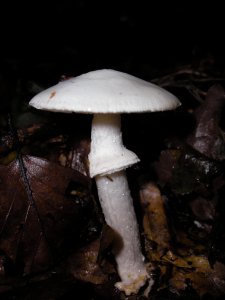
(Photo By: Danny Steaven / Wikimedia Commons)
Below are the 5 most common categories for major outcomes due to plant ingestion and the 3 most common categories for mushrooms. The number next to the category is how many major outcome cases were recorded by the AAPCC from 2010-2016. Specific species are not available for this data. The example plant genuses next to each category represent plants in the category but may or may not represent the actual plants involved in the cases.
Plant-Anticholonergics (Datura, Brugmansia, Atropa) : 67
Plant-Hallucinogenics (mitragyna “kratom”, probably others): 59
Plant-Gastrointestinal Irritants (Phytolacca “pokeweed“, probably others): 26
Plant-Cardiac Glycosides (Digitalis, Convallaria, Nerium): 16
Plant-Stimulants (Ephedra, coffea) : 9
Mushroom-Cyclopeptides (Death cap (Amanita), Galerina, others): 46
Mushroom-Hallucinogenics (Psilocybin, Psilocin): 38
Mushroom-Muscimol (Amanita”Fly Agaric“): 16
It is likely that many of these are a mistake made in judgement or quantity ingested and not a mistake in identity of the species such as is likely for the Plant-Anticholonergics as well as the other hallucinogenic plant and mushroom categories. On the other hand there are a couple categories that are likely a mistake in identification such as Plant-Cardiac Glycosides (digitalis in particular) and Mushroom-Cyclopeptides.
Specific Poisonous Mushroom and Plant Species That Have Caused Death
These are the specific species or type of organism that resulted in death from 2010-2016. Each line below represents one fatality unless there is another number of cases next to the name.
Plants – Non-Suicides
Cardiac glycoside (digitalis)
Cardiac glycoside(unknown)
Aconitum napellus
Brugmansia suaveolens
Mitragyna speciosa(Kratom)
Manihot esculenta (cassava)
Ibogaine
Aleurites moluccana
Pinus genus – This genus is not known for poisonous species – exact species and additional details are not given
Allium sativum(Common Garlic) + Ethanol – This species is not known to be highly toxic – additional details are not given
Mushrooms Non-Suicides
Cyclopeptides(Unknown but Probably Amanita phalloides): 7 Cases
Cyclopeptides(Amanita or Galerina)
Amanita phalloides
Amanita pantherina + Russula fragilis + Gymnopilus spectabilis
Coprinus comatus + Coprinus atrametarius –These species are not known to be highly toxic – additional details are not given
Plants-Suspected Suicides
Taxus baccata: 2 Cases
Cardiac Glycoside: 3 Cases
Ricin
Nerium oleander
Mitragyna speciosa
Aconitum napellus + Ethanol
Solanum dulcamara + Other Pharmaceuticals
Have Fun but Play it Safe When Foraging!
In My opinion the most important message to take from this information is simply that it is possible to be accidentally and fatally poisoned or severely impacted as a direct result of not taking all precautions when it comes to experimenting with foraged or even purchased plants and mushrooms. Visit our article on Safe Foraging Practices for more information on how to avoid the potential dangers that could be involved in foraging. The final section in this article includes links to the information on specific cases of fatal poisonings. Although this information may be hard to read it could be important in relating to the victim’s situation which might help us to realize that some of these tragic events aren’t as far from our own foraging practices as we assume.
Specific Cases of Fatal Poisonings
(Remember the case number when you click the link, sometimes they are a little hard to spot in the data. Links may not go to the correct page in some browsers and mobile devices)
2016
Case 1681. Acute cyclopeptide mushroom ingestion: undoubtedly responsible
2015
Case 254. Acute Taxus baccata ingestion: undoubtedly responsible
Case 256. Acute cardiac glycoside ingestion: undoubtedly responsible
2014
Case 265. Acute Amanita phalloides ingestion: probably responsible
Case 266. Acute mushroom (cyclopeptides) ingestion: probably responsible
Case 296. Acute Aconitum napellus ingestion: probably responsible
2013
No Specific Case Information
2012
Case 413. Acute mushroom (cyclopeptides) ingestion: undoubtedly responsible
Case 417. Acute mushroom (cyclopeptides) ingestion: undoubtedly responsible
Case 418. Acute mushroom (cyclopeptides) ingestion: undoubtedly responsible
2011
Case 283. Acute cyclopeptide mushrooms ingestion: probably responsible
Case 304. Acute ibogaine ingestion: undoubtedly responsible
2010
No Specific Case Information
Many of our readers find that subscribing to Eat The Planet is the best way to make sure they don't miss any of our valuable information about wild edibles.
See our privacy policy for more information about ads on this site

